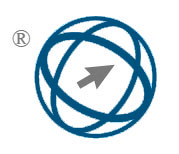EL-MODC: A SegNet and ResNet50-Based Deep Learning Framework for Multi-Object Detection and Classification
Abstract
Multi-object detection and classification are essential tasks in computer vision, with applications in autonomous navigation, healthcare diagnostics, and surveillance. Current models are confronted with problems such as intricate object boundaries, class imbalance, and real-time extension. To overcome these limitations, a new deep learning model—EL-MODC (Enhanced Learning-based Multi-Object Detection and Classification) architecture —is introduced. This architecture comprises a SegNet for accurate pixel-wise image segmentation and a modified ResNet-50, based on transfer learning. The architecture begins with robust data preprocessing and augmentation to enhance model capacity and robustness. With SegNet, the spatial localization of object regions can be efficiently carried out, and ResNet-50 can utilize the pre-trained weights of ImageNet to enhance the efficiency of learning and prediction. The performance of the proposed model was tested by comparing it with several baseline models, including UNet, Baseline CNN, and LeNet, showing that the proposed architecture achieved an accuracy of 96.40%, a precision of 96.02%, a recall of 96.32%, and an F1-score of 96.16%. EL-MODC slightly outperforms LeNet with a 95.19% F1-score and 95.07% accuracy, demonstrating enhanced performance in the test conditions described in the complex scenarios. Additionally, the model achieves an IoU of 86.5%, further reinforcing its strong generalization capability across object boundaries. Moreover, we present an in-depth performance analysis based on confusion matrices, detection visualization, and class distribution, which further demonstrates the robustness of the proposed system. EL-MODC is generalizable and applicable to varied domains and real-world environments. It can be deployed for real-time purposes, featuring a modular and efficient computational architecture. The proposed framework not only outperforms existing state-of-the-art models but also paves the way for potential improvements in multi-object detection, particularly in terms of interpretability and cross-domain adaptation.
Full Text:
PDFDOI: https://doi.org/10.31449/inf.v49i33.7900

This work is licensed under a Creative Commons Attribution 3.0 License.









